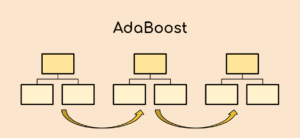A Brief History of Weighted Log Likelihood
Weighted log likelihood emerged from advancements in statistics and machine learning: statisticians recognized the need to address the varying importance of data points in unbalanced datasets. Refined through years of research, it has become a cornerstone in probabilistic modeling, machine learning, and data science.
What Is It?
Weighted Log Likelihood can be thought of as a sculptor chiseling a block of marble. Instead of applying equal pressure across the entire surface, the sculptor applies more effort to areas that will define the statue’s key features, ensuring the final piece reflects its true essence. Similarly, Weighted Log Likelihood gives more importance to certain data points, shaping the model to emphasize what truly matters.

Why Is It Being Used? What Challenges Are Being Addressed?
Weighted log likelihood solves key challenges:
- Unbalanced Data: Correcting skewed datasets where certain classes dominate others.
- Critical Data Points: Prioritizing essential observations to improve reliability.
- Complex Models: Adapting probabilistic models to better handle real-world intricacies.
These advantages make it indispensable in industries like healthcare analytics, fraud detection, and environmental modelling.
How Is It Being Used?
To apply weighted log likelihood:
- Assign weights to data points based on their importance or reliability.
- Modify the log likelihood formula to include these weights.
- Use the weighted result to refine model parameters during training.
This approach optimizes models for high-impact data, improving both relevance and predictive accuracy.
Different Types
Weighted log likelihood can vary by:
- Weighting Methods: Weights may be based on confidence levels, data rarity, or external metrics.
- Applications: Commonly implemented in regression, classification, and clustering tasks.
Different Features
- Flexibility: Adapts to prioritize subsets of data based on context.
- Scalability: Efficiently handles large, complex datasets.
- Improved Accuracy: Enhances performance by emphasizing key data points.
Different Software and Tools for It
Weighted log likelihood can be implemented using:
- Python: Libraries like Scikit-learn, PyTorch, and NumPy.
- R: Packages such as “stats” and “optimx.”
- MATLAB: Advanced statistical modeling toolkits.
- SAS: Built-in optimization and statistical tools.
Three Industry Applications in Australian Governmental Agencies
- Healthcare Analytics: Identifying critical patient trends to allocate resources effectively.
- Fraud Detection: Assigning higher weights to suspicious financial transactions for better anomaly detection.
- Environmental Policy: Emphasizing pollution data from high-risk areas to predict ecological impacts.
How interested are you in uncovering even more about this topic? Our next article dives deeper into [insert next topic], unravelling insights you won’t want to miss. Stay curious and take the next step with us!








